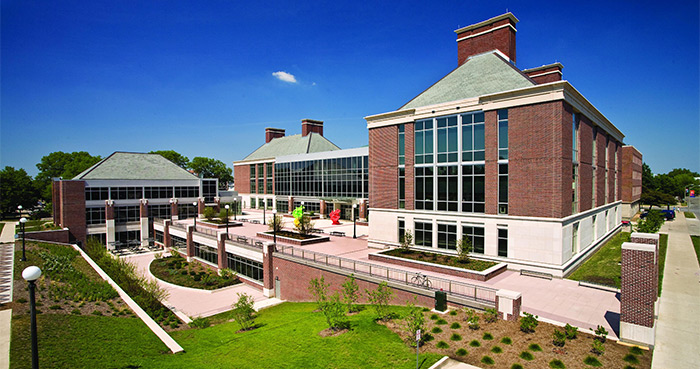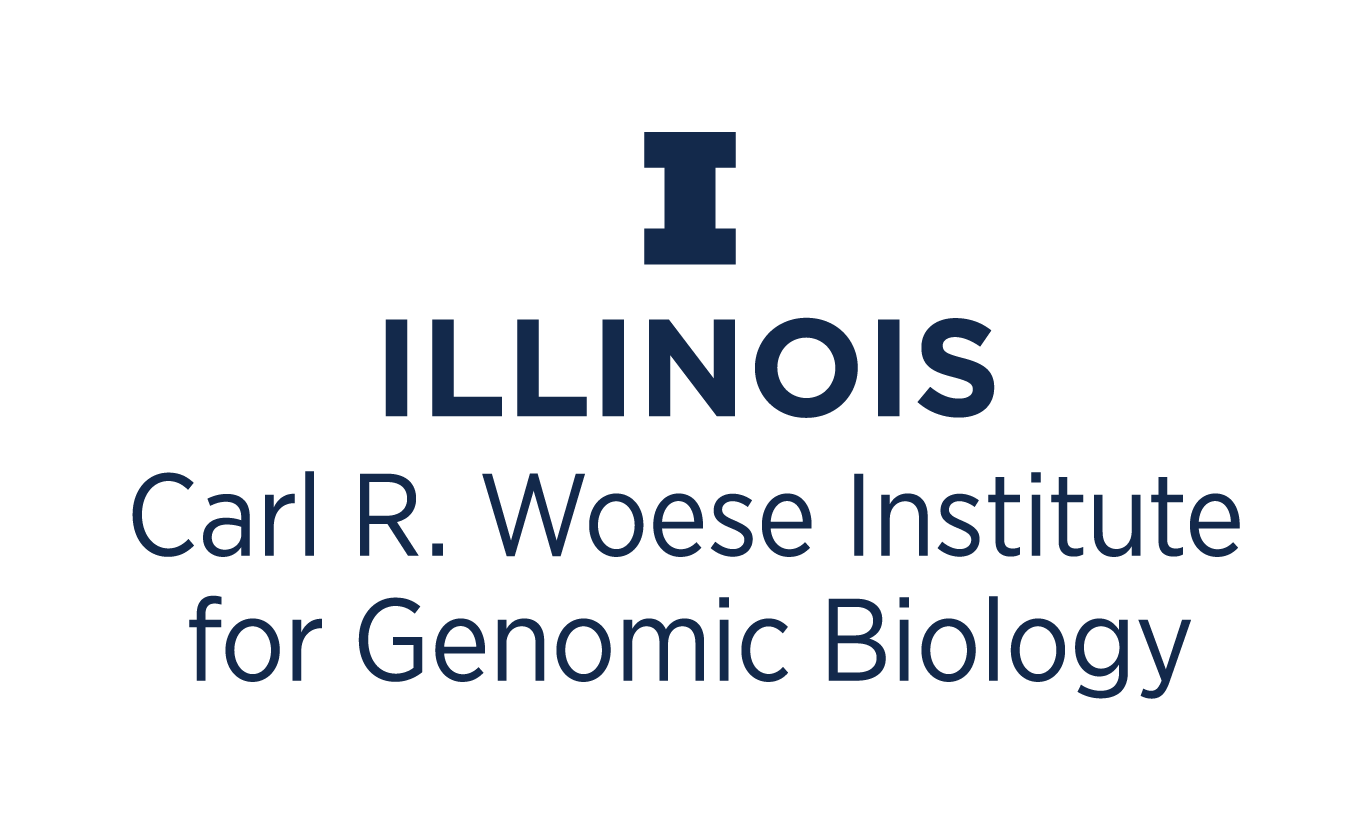By: Claire Benjamin.
In 2007 the University of Illinois began an innovative experiment in transdisciplinary collaboration by launching the Institute for Genomic Biology (IGB). The institute’s founding visionaries hypothesized that together they could address formidable challenges facing society by converging the university’s resources and expertise.

An Institute of Innovation
“Our dual mission is to advance life sciences research and to stimulate bioeconomic development, in the state, in the region, and throughout the world,” said IGB Director and Swanlund Chair of Entomology Gene Robinson. “These may sound like familiar goals, but the way we go about meeting our goals is very unique. There are no individual laboratories at the IGB. That is, there are no individual scientists who have their own lab, rather all the space is assigned to groups of interdisciplinary scientists working together to address grand challenges.”
Before the IGB was established in 2003, biology research endeavors and resources were scattered across the campus. The IGB building, completed in 2007, provides researchers with a central hub where they can pool together knowledge and technology to fulfill the mission of the IGB.
Since opening its doors, the IGB has garnered over $215 million from federal and industry funding sources to support research projects within the IGB’s multiple thematic research groups that focus on solving real-world problems, like antibiotic resistance and food security.
Unique industry partnerships also support the IGB and its mission by funding a specific area of research. The Energy Biosciences Institute, which maintains a lab at Illinois within the IGB, is supported by a multi-million dollar grant from energy company BP to solve the global energy challenge. The Center for Nutrition, Learning, and Memory, made possible by a five-year investment from Abbott, is a collaborative effort to understand how nutrition impacts cognition.
IGB faculty members are drawn from a broad range of disciplines, including crop sciences, physics, computer sciences, and law, among many others. Unified by common interests, IGB faculty work on both independent and shared projects within the IGB’s research themes.
Addressing Hunger
The Genomic Ecology of Global Change (GEGC) theme is employing genomics to create a safe and abundant food supply even as the climate changes. Theme members recently received a five-year, $25 million grant from the Bill & Melinda Gates Foundation to study a process crucial to most life on earth: photosynthesis.
By improving the efficiency of how plants convert the sun’s energy into food, GEGC believes they can increase the yield of staple food crops by as much as 60 percent, which would benefit farmers and consumers around the world. “Photosynthesis promises a new area, ripe for exploitation, that will provide part of the yield jump the world needs to maintain food security,” said Stephen Long, the Gutgsell Endowed Professor of Plant Biology and Crop Sciences, who is leading this research project.

“Business as usual crop development in the face of accelerating agricultural demand and the challenges of rapid global change will not get the job done,” said the study’s Associate Director Don Ort, the Robert Emerson Professor of Plant Biology, who leads the GEGC research theme at the IGB. “This award invests in the unique strengths at Illinois as well as at our collaborating institutions and holds exceptional promise for broad impact outcomes.”
Responsive Behavior
Robinson and other members of the Gene Networks in Neural & Developmental Plasticity research theme are investigating the structure and function of the brain. This fundamental knowledge could help us better understand human behavior, mental illness, neurological disorders, and much more.
In a recent study, Robinson’s lab attached radio-frequency identification (RFID) tags to hundreds of individual honey bees to record their movements, like tracking an I-PASS passing through a toll. They discovered that some foraging bees collect much more nectar, but idler bees can take their place should those busy bees disappear.
While it is well known that genetics underlie differences in many types of behavior, the new findings show that “sometimes it is important to give individuals a chance in a different situation to truly find out how different they are from each other,” Robinson said.
Universal Biology
The Biocomplexity research theme explores the behavior of biological systems (like microbial communities) and the origin of life. Recently, the theme received an $8 million grant over five years from NASA to study how life began and has since evolved.
This multidisciplinary effort to define and characterize “universal biology” will include the fields of microbiology, geobiology, computational chemistry, genomics, and physics. The team will use genomics to explore deep evolutionary time, looking for signatures of early collective states of life.
“It is important to develop the field of universal biology, because we may never find traces of life on other planets,” said Nigel Goldenfeld, Swanlund Professor of Physics, who leads the Biocomplexity research theme. “But if we understand that life is generic, maybe even an expected outcome of the laws of physics, then we’ll know for sure that we are not alone.”
Engineering Solutions
Members of the Regenerative Biology and Tissue Engineering (RBTE) research theme have helped establish Illinois as the Midwest region’s center for large-animal biomedical models. RBTE researchers investigate technologies that can replace or regenerate human tissues and organs.
Matthew Wheeler, a professor of animal sciences at Illinois, helped conceptualize 3D-printed splints and first tested their efficacy in animal models before the device saved the life of Kaiba Gionfriddo, whose birth defect caused his airways to collapse and his heart to stop beating.

“All of our work is physician inspired,” Wheeler said. “Babies suffering from this birth defect were brought to ear, nose and throat surgeons, but they didn’t have any treatment options. They turned to us to engineer a cure.”
More data from Wheeler’s large animal trials will be essential to show the long-term viability of this procedure before it can be used to save the lives of other children born with this disorder, an estimated one in 2,100 births.
Learning Together
In addition to progressive research, the IGB is committed to providing outreach and education opportunities for people of all ages in Illinois and beyond. Every November at the Orpheum Children’s Museum, IGB members teach families about genomics through hands-on activities at Genome Day. Citizen scientists from the Osher Lifelong Learning Institute, a learning community for people over the age of 50, volunteer in IGB labs, often being delegated their own task to manage for the lab.
Through “Genomics For™” programs, IGB experts educate a wide range of professionals—from high school teachers to judges—about genomics and the impact of genomics in their professional fields.
Assessing the IGB Experiment
While the IGB experiment is ongoing, quantitative and qualitative data indicates that the university’s hypothesis—that we can accomplish great things through collaborative research—was correct. The IGB has made great strides by kick-starting its first startup company, acquiring multiple patents, and consistently being published in some of the world’s most prestigious science journals. But even more telling are stories like Kaiba’s and countless others that exemplify the success of the IGB’s interdisciplinary approach to research.
By: Claire Benjamin.
Photos By: Don Hamerman and Kathryn Faith.




